AIR TRANSPORT Future airliner propulsion
Powering a net zero future
How will the airliners of the future be powered? Electric, hybrid-electric, hydrogen, or even ammonia? TIM ROBINSON FRAeS reports from the RAeS Alternative Propulsion Technologies – the Challenges and Opportunities for Aircraft Design Conference, held on 1-2 December in a hybrid format at both RAeS HQ and virtually.
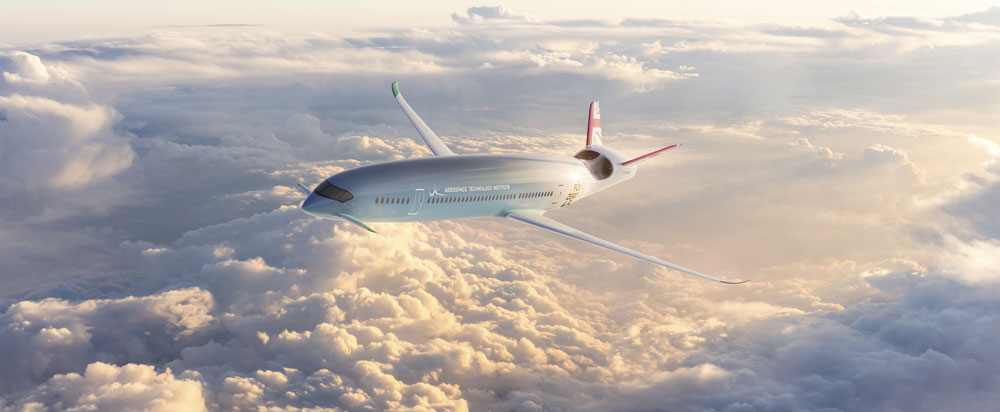 The ATI FlyZero concept. ATI
The ATI FlyZero concept. ATI
Today aviation stands on the threshold of a whole new age as the challenge of climate change focuses some of the best minds in the industry on how to decarbonise aerospace and allow for sustainable growth. A key challenge then, is what will take the place of kerosene-derived Jet AI – a fuel that is almost perfect for aircraft with its energy density and ease of storage. In early December, the RAeS hosted a conference on ‘alternative propulsion’ looking at this very question – and the challenges and opportunities posed by electric, hybrid-electric and hydrogen propulsion.
While the conference had as its title ‘alternative propulsion’, the event also saw significant time devoted on configurations and airframes – a sign as to how closely integrated new powerplants and airframes will have to be when designing new zero carbon airliners. For example, if electric-distributed propulsion is used, with multiple electric engines and propellers spaced out on the wings, what will be the effect of these on aeroelasticity and flutter?
Where is the best place to store heavy batteries for an electric aircraft – spaced around the airframe or all in one place? And, perhaps the biggest question of all – how to incorporate hydrogen fuel tanks into a future airliner in a way that keeps drag penalties to a minimum, reduces CoG changes and provides maximum safety to crew and passengers in the event of a crash landing. There are also questions around the airport infrastructure and the supply chains that will need to potentially support multiple types of aviation fuel or energy in the future – for example the standardisation of electric aircraft chargers.
The conference featured a variety of speakers from the big airframers, such as Airbus and Boeing, to engine companies and academics – and a wide range of viewpoints from electric aviation evangelists to the hydrogen skeptics. The presentations also ranged from concept aircraft that exist only as CGI renders to briefings on real green aircraft, such as Ampaire’s hybrid-electric EEL and the Rolls-Royce/Electroflight record-breaking electric ‘Spirit of Innovation’ racer. The hybrid format also allowed for robust and lively Q&A sessions from the floor and from online delegates – adding to the learned discussion and debate.
With two full days of presentations, this invariably will be just a snapshot of the proceedings. Let us take a look at some of the highlights.
ATI teases narrowbody concept
Giving an update on UK ATI and its FlyZero green airliner design study were Mark Scully, Head of Technology and Propulsion, ATI, Simon Webb, Chief Engineer – Propulsion, FlyZero and Anna Calder, Flight Physics Lead, FlyZero.
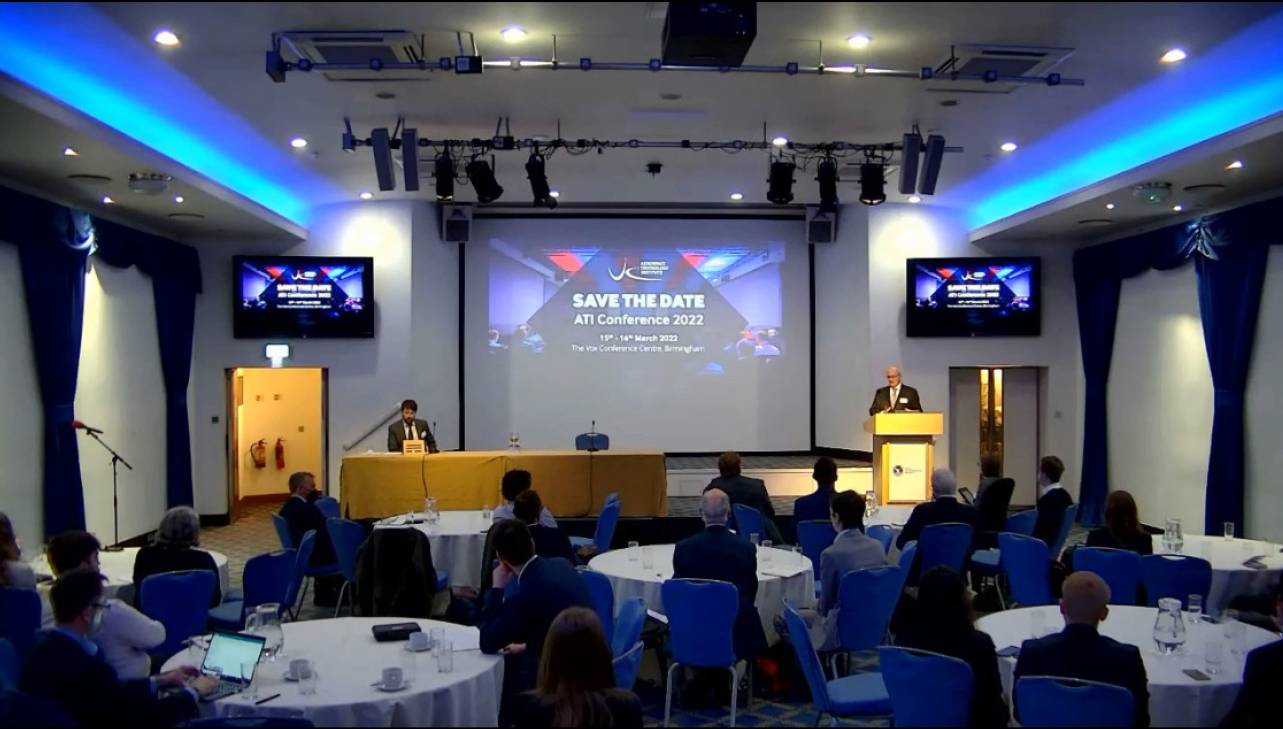 Inside the live RAeS Alternative Propulsion Technologies conference at RAeS’ HQ in Mayfair, London.
Inside the live RAeS Alternative Propulsion Technologies conference at RAeS’ HQ in Mayfair, London.
FlyZero has been a year-long design and engineering study (see ‘Flying the carbon-free way’ AEROSPACE, October 2021), involving around 100 experts, many seconded from industry, to imagine the future of zero-carbon civil aviation, with a brief to narrow down over 20 concepts to three ‘scout’ airliner designs, covering regional, short-range and twin-aisle airliner sectors.
At the conference, FlyZero teased an image (left) of their short-range A320-class ‘scout’ design, which features a V-tail, canards and rear-mounted engines, possibly using boundary layer ingestion (BLI). This, like a larger medium-range concept revealed on 6 December, would use liquid hydrogen to power turbofan engines. It would carry 150 passengers with a range of more than 1,500nm. Having revealed two of the three designs, a third regional ‘scout’ aircraft concept is set to be unveiled in early 2022.
FlyZero’s Webb also gave a fascinating breakdown of the suitability, performance and economics of the various alternative power sources being proposed, and concluded: “We believe that the development of liquid hydrogen and SAF is needed to accelerate net zero”.
However, despite excitement of the potential of hydrogen, particularly green hydrogen made using renewable energy, not all were convinced, with Prof. Dr.-Ing. Dieter Scholz, from Hamburg University of Applied Sciences flashing up in his presentation a 1995 headline from Flight International, that reported that DASA (forerunner of EADS/Airbus) was planning to fly a Dornier 328 with hydrogen in 1998 and wryly noting that nothing happened. Will it be the same again?
Ammonia as a fuel of the future?
While much discussion centred around electric, hybrid-electric, fuel cell and hydrogen as potential power sources for future aircraft, a presentation by the UK’s Reaction Engines explored the feasibility of ammonia as green aviation fuel. Reaction Engines, best known for its game-changing SABRE air-breathing rocket, outlined to delegates how its top-secret precooler technology – the key to rapidly cooling super-heated air moving at high Mach speeds – has now an increasing number of spin-off applications for alternative green propulsion systems. For example, thermal management of high-performance batteries, which require a specific operating temperature, is a major challenge for electric flight. To that end, Reaction Engines has now developed a spin-off family of precooler heat exchangers and radiators that can be incorporated into cooling and thermal management systems.
 A look at how ammonia may fuel future jet engines. Reaction Engines
A look at how ammonia may fuel future jet engines. Reaction Engines
The first application of this spin-off precooler technology may be the Britten-Norman Islander being converted to hydrogen fuel cell technology by Cranfield Aerospace under Project Fresson. In October, Reaction Engines announced that it would be joining Project Fresson to provide an ultra low-drag heat rejection system to meet the fuel cell cooling requirements.
Reaction Engines also believes that its heat exchanger technology could make ammonia-powered airliners viable – a fuel source that would only produce nitrogen and water vapour as waste products. Describing this as a ‘semi drop-in’ fuel solution, the liquid ammonia would be stored in the wings, like kerosene fuel today. Using heat from the jet engine’s exhaust, Reaction Engines’ heat exchanger would pass this on to a cracking reactor which would separate the ammonia into hydrogen and nitrogen, with the hydrogen being combusted in the engine. To demonstrate the feasibility of this concept, Reaction Engines is now partnered with IP Group and the UK government’s Science and Technology Facilities Council. The benefits of this approach then, is that hydrogen is being burnt by the engine, yet the aircraft does not need the vast cryogenic fuel tanks that require a completely new airframe configuration.
Double-fuselage airliners?
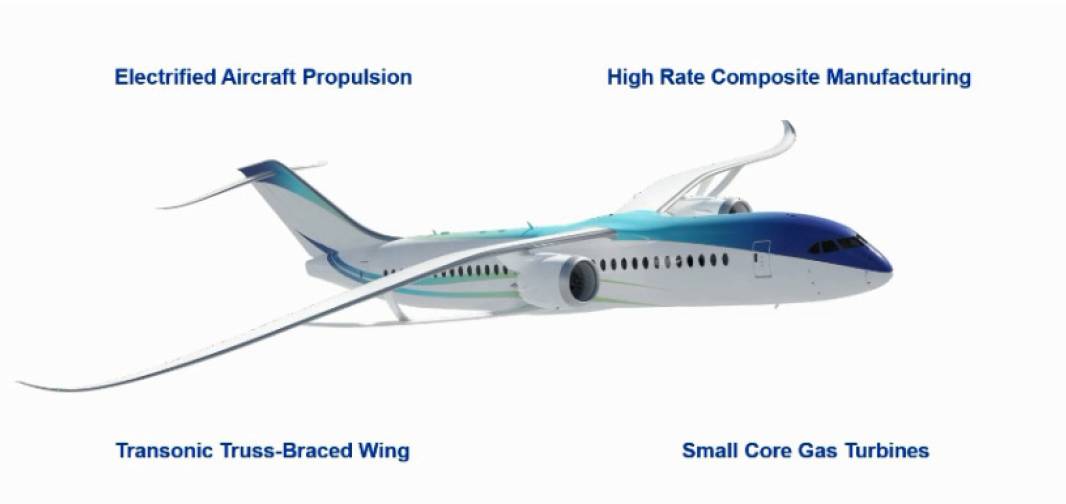 This elegant concept for a truss braced wing airliner was presented by Boeing at the conference. Boeing
This elegant concept for a truss braced wing airliner was presented by Boeing at the conference. Boeing
Meanwhile, a presentation from Dr Raj Nangia and Les Hyde showed off a design for a twin-fuselage twin-engined liquid hydrogen-powered airline, for around 160 seats. With a configuration similar to the Twin Mustang or Rutan Boomerang, Nangia and Hyde explained their concept had been designed for maximum safety, by locating the LH2 fuel tanks in a separate fuselage pod, which would then ease certification and crashworthiness issues.
After considering a range of other options (fuel tanks above the cabin, pannier tanks, ‘drop tanks’ under the wings) the team selected the twin-fuselage as offering the best solution to keeping liquid hydrogen as far away from passengers and crew as possible.
Interestingly, they also noted that a twin-fuselage design would also simplify fuelling/de-fuelling procedures in that the entire fuselage pod could be removed and swapped with a full tank, or even removed overnight to be kept in a climate-controlled cold storage facility to minimise boil-off.
With extended span wings (46-48m), this means that some sort of folding wingtips will be needed to fit into a standard airport type C box but the increased wingspan does mean that, despite the increased wetted area, compared to a single fuselage design, fuel efficiency and overall drag remains similar to a traditional narrowbody.
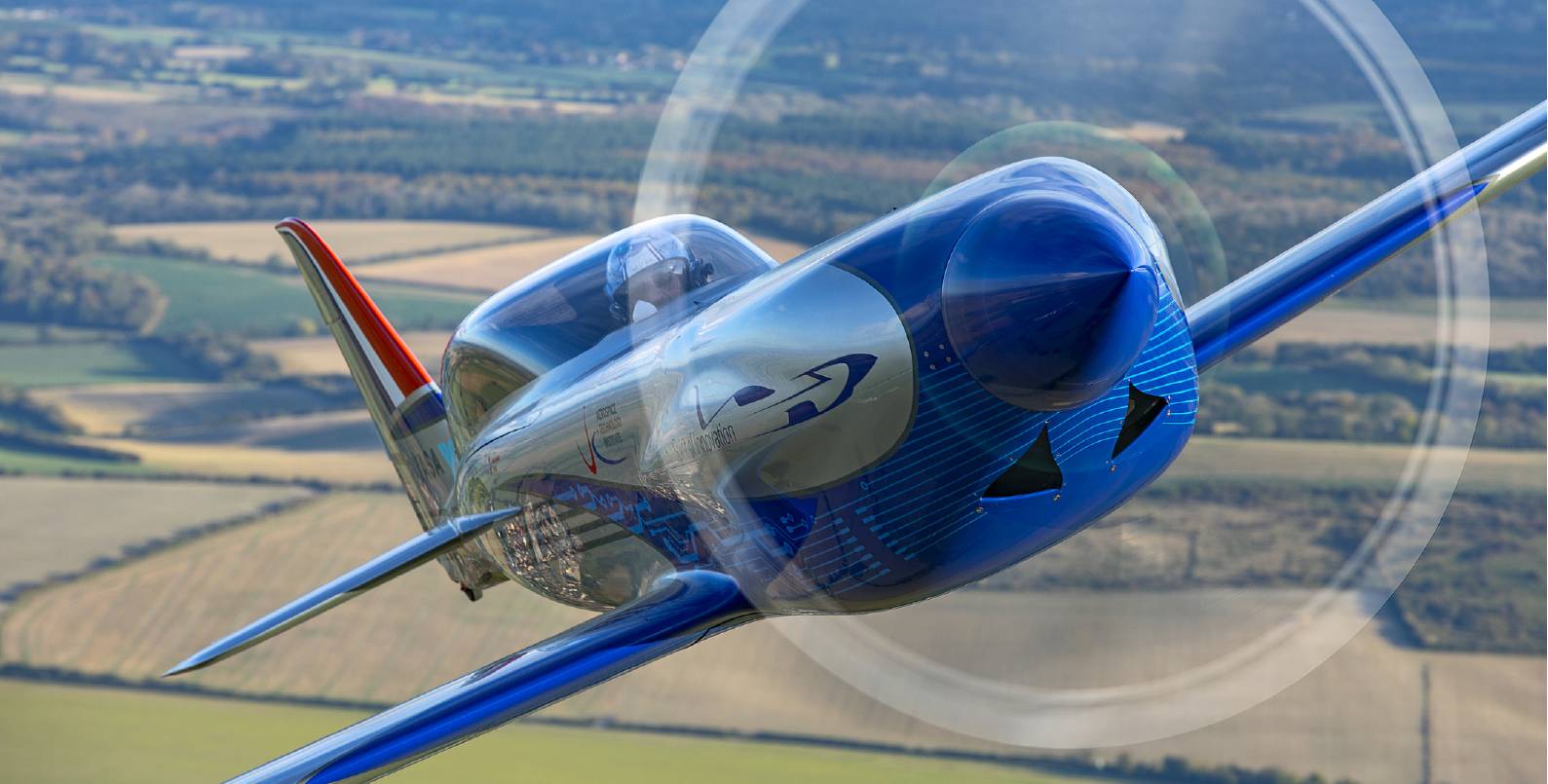 The Rolls-Royce/Electro-flight record breaking electric ‘Spirit of Innovation’ racer featured in one of the presentation. Rolls-Royce
The Rolls-Royce/Electro-flight record breaking electric ‘Spirit of Innovation’ racer featured in one of the presentation. Rolls-Royce
New tools for design
With the design space expanding out into radical configurations as engineers grapple with the challenge of incorporating electric, fuel cell, hybrid and hydrogen propulsion systems into tomorrow’s airliners, the conference heard how the latest in digital software tools can speed up the optimisation. Giving a presentation on Multidisciplinary Design Optimisation (MDO), Dr Joaquim Martins, Professor of Aerospace Engineering, University of Michigan showed the conference how given design parameters, MDO software could turn a sphere into a supercritical aerofoil in a couple of hours on a laptop, vastly speeding up the design process.
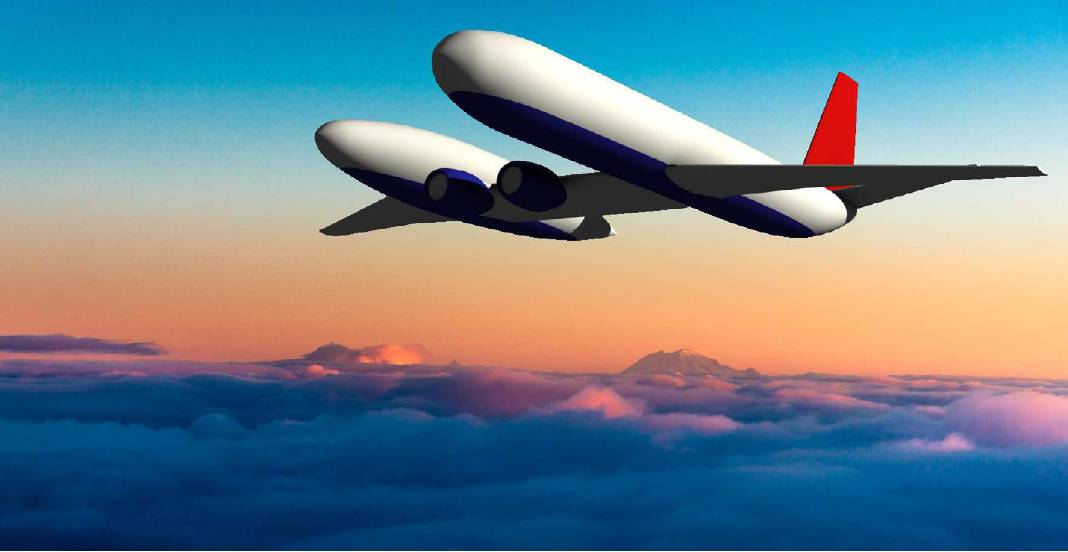 A design Nangia and Hyde for a twin-fuselage twin-engined liquid hydrogen-powered airliner. Nangia/Hyde
A design Nangia and Hyde for a twin-fuselage twin-engined liquid hydrogen-powered airliner. Nangia/Hyde
In another example, a ‘plank’ was optimised into a swept wing with hundreds of interrelated design changes able to be implemented simultaneously. Internal volume (for example, for pilots/passengers, fuel/battery storage) could also be defined, with the software optimising the perfect aerodynamic shapes around these.
As well as aerodynamic optimisation, MDO also supports electro-propulsive, aerothermal, aero-acoustic, trajectory optimisation and aero-propulsive design optimisation, said Martins, who gave another example where MDO had been used to refine NASA’s STARC-ABL boundary layer ingestion (BLI) airliner design. MDO and the wider model-based systems engineering (MBSE) thus has the potential to speed up aircraft design from the traditional, linear, iterative process into an agile parallel process – helping accelerate the race to green airliners.
Summary
This conference then was a highly topical and extremely useful forum for those working in, or interested in keeping up with, the fast-moving field of alternative propulsion technology – which now seems to be accelerating even faster as momentum builds towards a net zero future of flight.
 The ATI FlyZero concept. ATI
The ATI FlyZero concept. ATI



